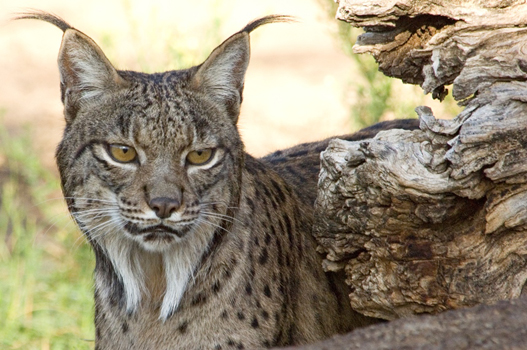Genomic studies of endangered species provide insights into their evolution and demographic history, reveal patterns of genomic erosion that might limit their viability, and offer tools for their effective conservation. The Iberian lynx (Lynx pardinus) is the most endangered felid and a unique example of a species on the brink of extinction. The first annotated draft of the Iberian lynx genome has been generated and genome-based analyses of lynx demography, evolution, and population genetics have been carried out. A series of severe population bottlenecks in the history of the Iberian lynx were identified that predate its known demographic decline during the 20th century and have greatly impacted its genome evolution. Drastically reduced rates of weak-to-strong substitutions associated with GC-biased gene conversion and increased rates of fixation of transposable elements are observed. Multiple signatures of genetic erosion in the two remnant Iberian lynx populations were also found, including a high frequency of potentially deleterious variants and substitutions, as well as the lowest genome-wide genetic diversity reported so far in any species. The genomic features observed in the Iberian lynx genome may hamper short- and long-term viability through reduced fitness and adaptive potential. The knowledge and resources developed in this study will boost the research on felid evolution and conservation genomics and will benefit the ongoing conservation and management of this emblematic species. informacion[at]ebd.csic.es: Abascal et al (2016) Extreme genomic erosion after recurrent demographic bottlenecks in the highly endangered Iberian lynx. Genome Biology. Doi 0.1186/s13059-016-1090-1. Visit the project's website.
http://genomebiology.biomedcentral.com/articles/10.1186/s13059-016-1090-1  Latest News
Latest News
Back

